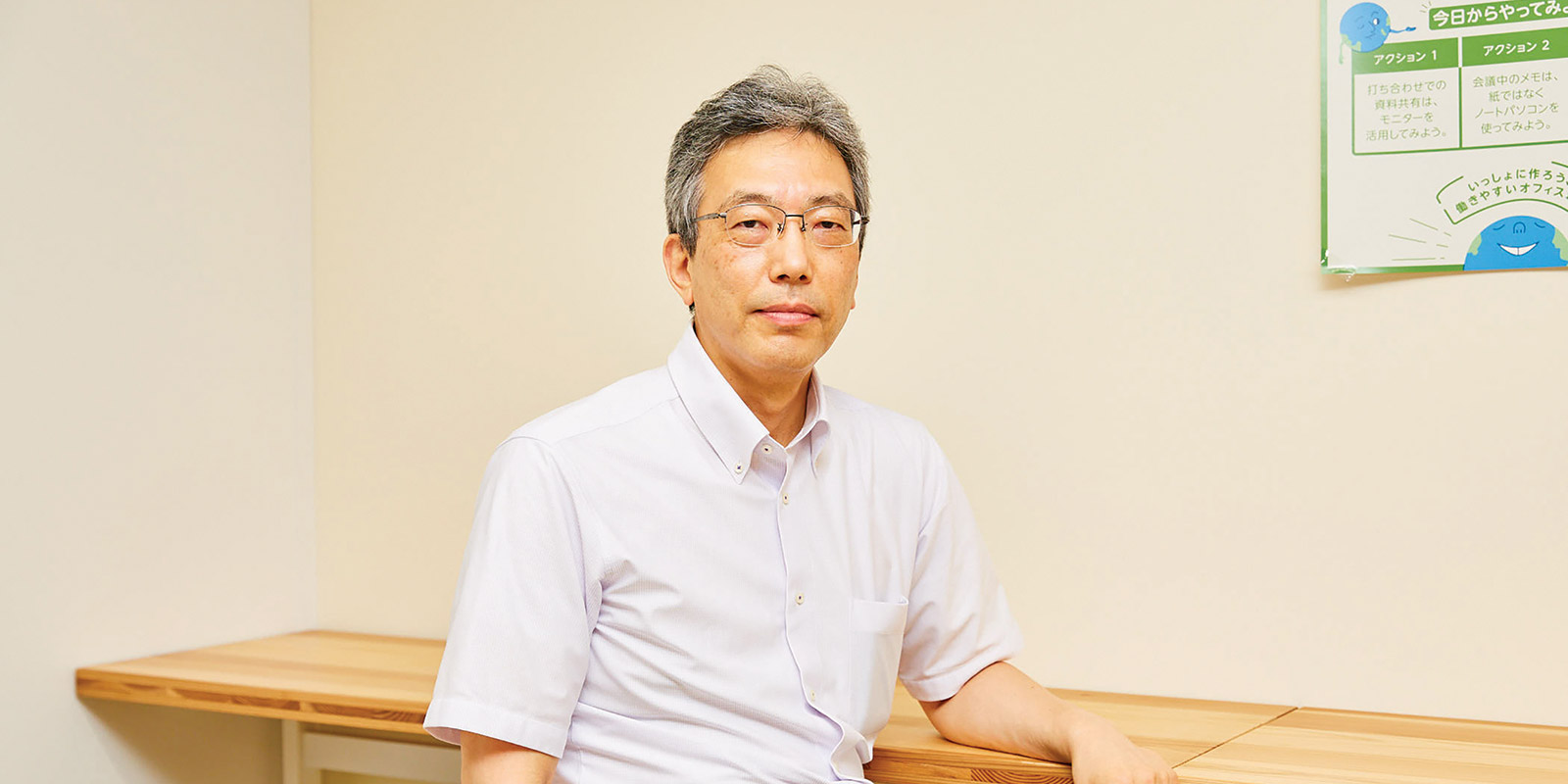How to save the planet
Hiroshi Ono, Vice-Minister for Global Environmental Affairs at the Ministry of the Environment, unveils the government’s plans for an inclusive and sustainable economy to energy journalist Kiminori Hiromachi and emphasizes the importance of COP27, the UN climate change conference to be held in Sharm El Sheikh, Egypt in November 2022, to combating climate change
“The plan positions renewable energy as the country’s main source of power”
Step one: Make fossil fuels a thing of the past
“In October 2020 Japan declared its aim to become carbon neutral by 2050, and in April 2021 the government committed to reducing greenhouse gas emissions by 46 percent by 2030 compared to 2013 levels. Furthermore, Japan will continue strenuous efforts in its challenge to meet the lofty goal of cutting its emissions by 50 percent. To make those goals a reality, in October 2021 we revised the Strategic Energy Plan, which sets the direction of the country’s energy policy. The plan positions renewable energy as the country’s main source of power and renewables are given the highest priority. Furthermore, in July 2022, the GX (Green Transformation) Implementation Conference led by Prime Minister Kishida was set up to examine the measures necessary to shift from a fossil fuel-oriented economic, social, and industrial structure to one focused on clean energy, thereby reforming the entire economic and social system.”
“The plan positions renewable energy as the country’s main source of power”
Step two: Create a healthy, green economy
“In PM Kishida’s statement, carrying out the green transformation is one of the most important pillars in the foundation of a new kind of capitalism. By attracting public and private investment, we want to turn the medium- to long-term challenge of decarbonization into a growth engine for our country and create a sustainable economy. Climate change is the most prominent example of the negative aspects of conventional capitalism, where economic development and environmental destruction exist side by side. A new capitalism, on the other hand, could turn climate change action into a driving force for growth.”
 Hiroshi Ono | Kisa Toyoshima
Hiroshi Ono | Kisa Toyoshima
Step three: Work across borders
“Climate change can’t be solved by any one country, and acceleration of emission reductions around the world will certainly be a major theme at COP27. Japan will emphasize its efforts in international cooperation, including but not limited to working together with other Asian countries on the transition to decarbonization, strengthening partnerships to encourage investment in developing countries, and promoting cooperative innovation in the clean energy sector together with developed countries.”
“To aid cooperation with Asian countries, PM Kishida announced the concept of the Asia Zero Emissions Community at the World Economic Forum (in Davos, Switzerland) in January 2022. This initiative, which has attracted strong interest, is a framework for decarbonizing the Asian region as a whole through mutual cooperation based on a common philosophy of realizing both decarbonization and economic growth in line with the region’s potential. It also aims to create a mechanism for joint international investment and joint funding, including the establishment of Asian rules for climate transition financing.”
 Ono believes technology like Hitachi’s hydrogen train will bring down emissions | ©Hitachi Rail
Ono believes technology like Hitachi’s hydrogen train will bring down emissions | ©Hitachi Rail
“Developing countries will find it easier to introduce decarbonization technologies”
Step four: Help developing countries decarbonize
“Japan is also actively involved in establishing a partnership on capacity building for utilizing market mechanisms, which is set to be launched at COP27. The partnership will enhance the usage of greenhouse gas emission reductions, as removals achieved in one country can be used to meet the national reduction targets of other countries by taking into account the contributions of the country to achieving [those] reductions and removals. For example, if a Japanese company builds a solar power plant in a developing country and achieves emission reductions, part of those reductions can be counted as Japan’s emission reduction efforts, based on the contribution by the company. This will incentivize Japanese stakeholders to realize such projects, while developing countries will find it easier to introduce decarbonization technologies. Generally speaking, many advanced decarbonization technologies are unlikely to provide a return on investment in a short period of time, but by making full use of this partnership, it is possible to have developing countries benefit from such technologies without being overburdened financially. It’s a true win-win mechanism.”
“Developing countries will find it easier to introduce decarbonization technologies”
Step five: Encourage ground-level actions
“While national-level efforts are the main topic of discussion at the COP, it’s essential that national and local efforts are coordinated in order to achieve national emission reduction targets and ultimately decarbonization. We are committed to supporting local initiatives on decarbonization that capitalize on the specific characteristics of each region. We will be highlighting places that are taking particularly noteworthy steps toward decarbonization in order to quickly generate successful examples of local initiatives not only in large cities, but also in rural locales such as fishing villages, mountainous areas, and remote islands. At least 100 ‘decarbonization leading areas’ will be selected by 2025 based on the plans submitted by local governments, with the aim of developing these places into model regions through financial and other means of support.”
 The Taisei Corporation’s solar power innovations will be on display at the Japan Pavilion at COP27
The Taisei Corporation’s solar power innovations will be on display at the Japan Pavilion at COP27
Step six: Disseminate and share our successes
“Around 40 seminars will be held at the COP27 Japan Pavilion to introduce Japan’s initiatives. The Japan Pavilion will also showcase products and solutions from Japanese companies on climate change mitigation, adaptation, and CO2 utilization. There’ll be ten real-world exhibits, along with 20 virtual exhibits that can be viewed online from anywhere in the world. Our exhibition will cover, for example, a system that generates electricity from solar modules integrated into buildings’ outer walls and windows, hydrogen-powered hybrid railway vehicles, and technologies to utilize recovered CO2 to produce concrete. These are all innovative solutions that will accelerate decarbonization efforts, and we hope that they’ll be instructive for all countries seeking to tackle global warming.”
“We hope that they’ll be instructive for all countries seeking to tackle global warming”
Step seven: Work both on the short and the long term
“The effects of global warming are manifesting themselves in various destructive forms, such as storms and droughts. In order to meet the target shared by the international community—‘achieving a balance between anthropogenic emissions by sources [greenhouse gases emitted by human activity] and removals by sinks of greenhouse gases [decarbonizing the atmosphere through CO2 removal techniques such as reforestation] in the second half of this century’—it’s crucial to work toward this goal by 2030. Japan will accelerate its decarbonization efforts through GX, which is integrated with economic growth. Japan will also deploy its diverse technologies, knowledge, and experience around the world to support the efforts of other countries. Furthermore, we will steadily implement our commitment of around US$70 billion in financial support over the next five years and the doubling of financial support for adaptation measures, which we announced at the previous COP.”
“The present turmoil and price spikes in international energy markets related to Russia’s aggression in Ukraine have led to an urgent need for all countries to rebuild stable energy supplies. In the short term, overcoming this crisis is our top priority, but we must not waver with regard to our medium- and long-term goals targeting 2030 and 2050. We need to both reverse the crisis at hand and come up with a scenario that will lead to the realization of the GX, which we will then share with the world.”
“Japan will hold the presidency of the G7 in 2023. Based on the results of COP27, we will deepen discussions and show leadership in overcoming climate change and the energy crisis together with [fellow] G7 members.”